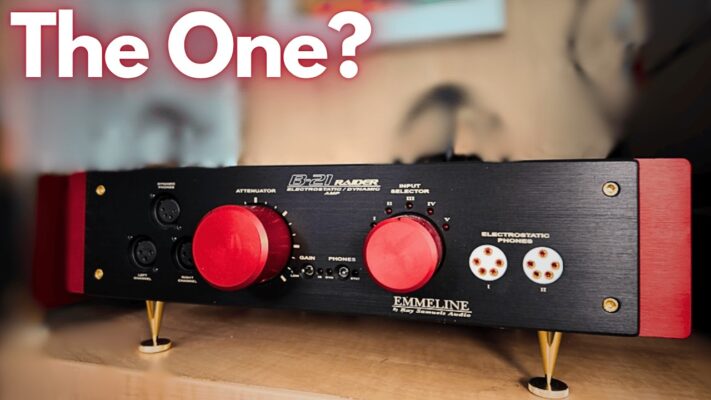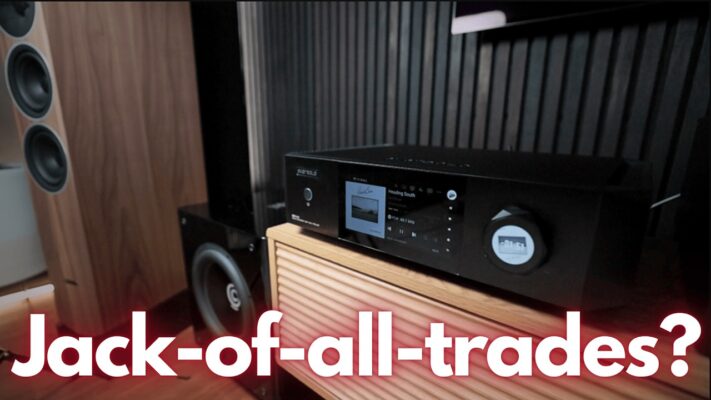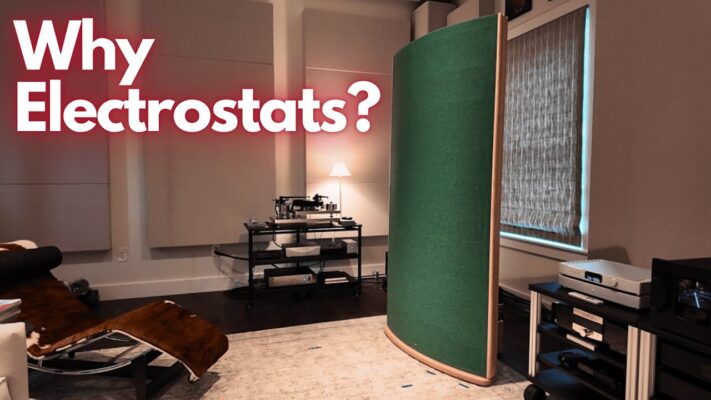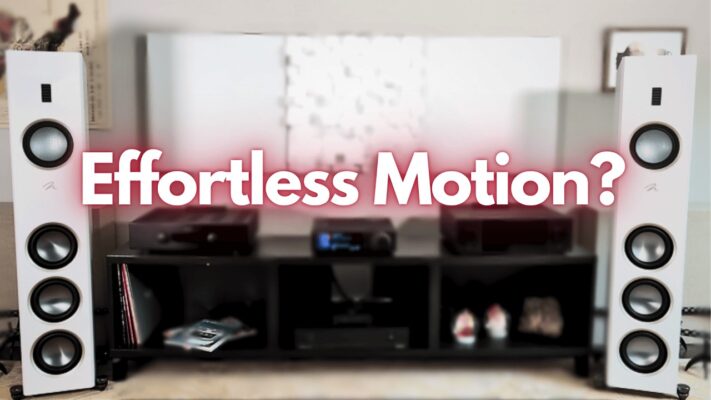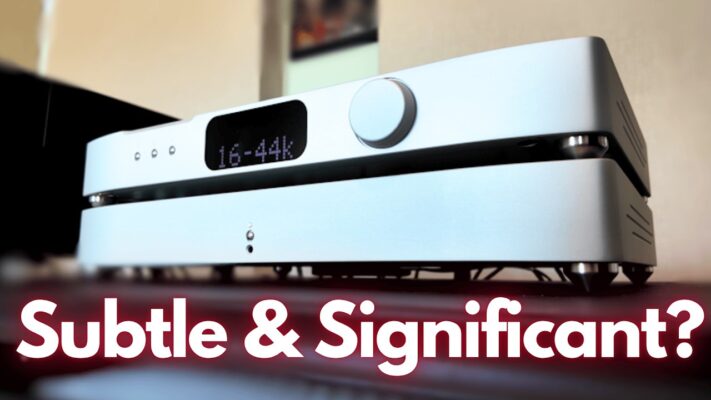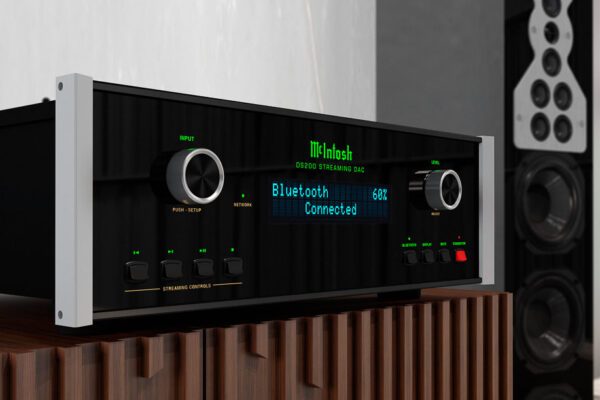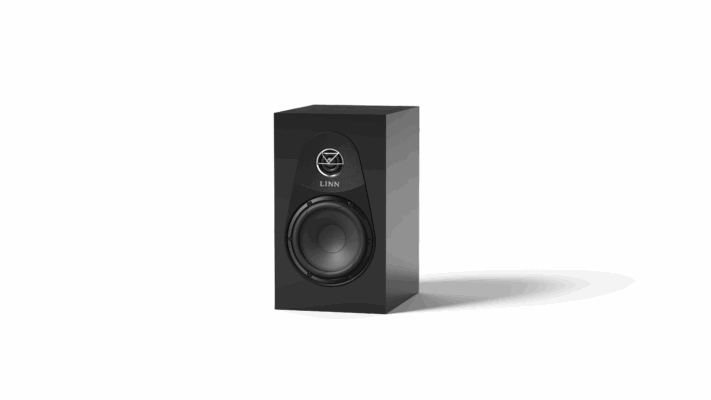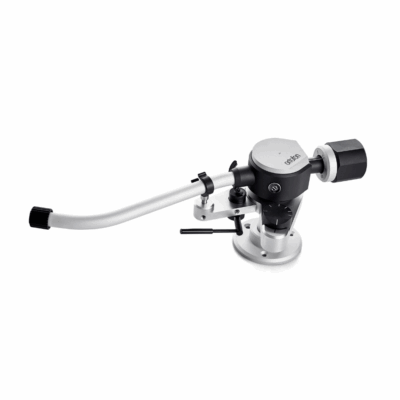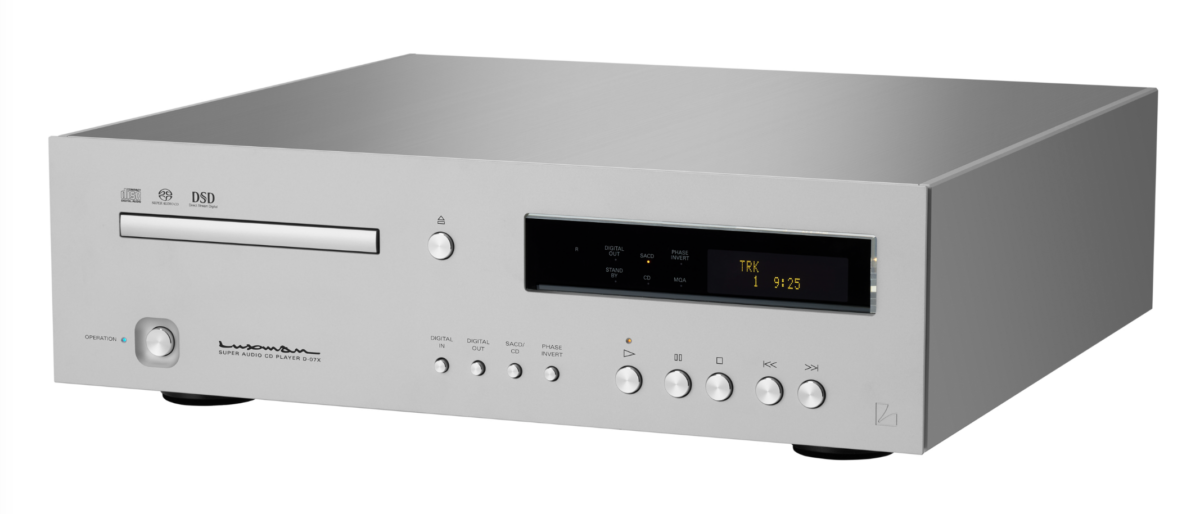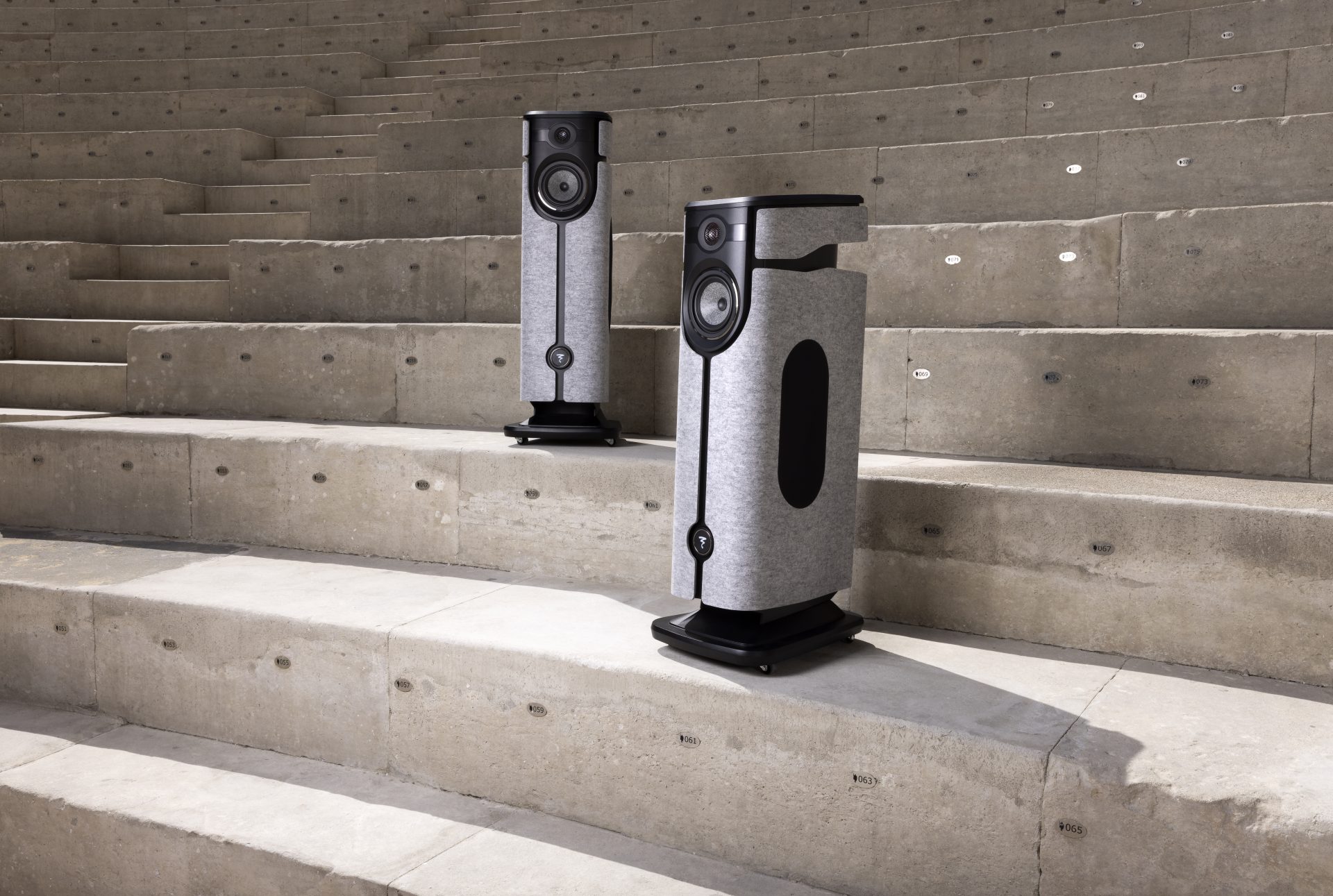
Last October, Tom Martin and I were in lower Manhattan to attend the official launch of the new Focal Diva Utopia loudspeaker. The setting was the New York City showroom for an exclusive Paris-based interior-decorating company that sells very expensive, uncomfortable living room furniture in various shades of white. As several fashionably dressed and impossibly thin French women in Focal’s employ gently steered the more casually attired audio press to an ample supply of wine, sparkling water, cheese, and charcuterie, the manufacturer introduced its collaborative undertaking with Naim Audio, Focal’s first-ever wireless active speaker. Tom’s considered impressions of the speaker were up on the TAS website within three days of the event, and some months later, at the slower pace of traditional print media, here are mine.
As the evening progressed, Tom and I gathered increasingly that the Divas were being presented as a “lifestyle product.” John Spacey, creator of the Simplicable blog, defined that term as a consumer good “perceived as an expression of an individual’s style, preferences, values, way of life, and social status.” At the NYC event, a number of product features were emphasized to make the Divas seem user-friendly—especially if that user wasn’t an audiophile. We were told that, despite their size, one person can unpack the Divas and that setup is a breeze. Because this is a fully integrated system, with a streamer, DAC and amplification inside the cabinets, the box count goes way down, and there are practically no wires—potentially, just a power cord for each loudspeaker. What meets the eye isn’t the high-density polymer that actually forms the enclosure but the grey felt finish that covers it, a design aspect that softens the loudspeaker’s visual impact. A dedicated, easy-to-use app, installed on your phone or tablet, connects one to music stored locally or to any of the popular music-streaming services. The aesthetic gatekeeper at home should be pleading to have these things in the living room, or so Focal would have it.
Which could be true. But that marketing emphasis, at least subliminally, could be selling the Divas short when it comes to what truly matters most, which is how they sound. Despite sitting off-axis most of the time when the speakers were being demonstrated at the launch, Tom and I very much liked what we were hearing. Still, extended listening under familiar conditions was necessary to confirm a positive assessment, and that enviable task fell to me.
To consider first the “lifestyle” aspects of the Utopia Divas, some will be valid selling points for the audio-hesitant, some less so. The necessary electronics are, indeed, entirely out of sight, allowing the aesthete in your household to devote more shelf space to art books, family photos, and their Murano glass collection. The cabling is minimal. But the Divas look like loudspeakers, and big, bulky ones at that. When KEF wanted to make a visually stylish product, they came up with the Blade; Bowers & Wilkins developed the Nautilus. Other lookers on the current market include models from Davone, Sonus faber, and, of course, Estelon. Focal covered a product having the usual Utopia form factor with felt and called it a day. In terms of the messaging that setting the Divas is a one-person operation, don’t attempt it. (Even the owner’s manual states uncategorically that “two people are required to move the speakers.”) Yes, the Divas have casters attached to their bottom surface and are thus easily rolled into position before screwing in the provided spikes to raise the wheels off the floor. But getting the Divas unpacked involves changing the orientation of a 174-pound box several times, which was beyond me, and I called a friend for help. Purchasers should get their dealer to oversee setup, and no one gets hurt.
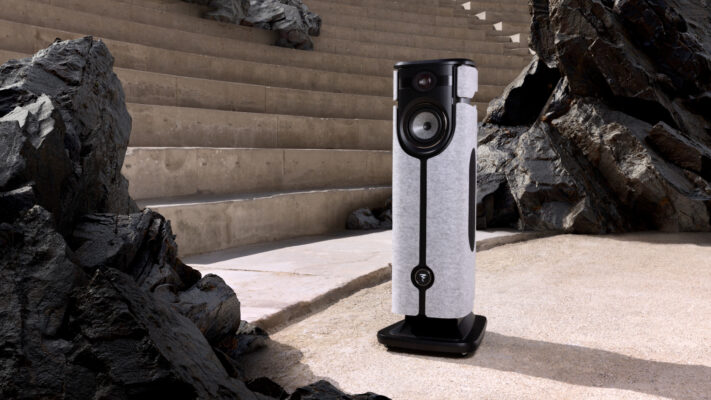
Focal’s Diva is a three-way, six-driver, bass-reflex design, the molded polymer cabinet having the general appearance of other loudspeakers in the Utopia line. A downward-sloping module containing the high-frequency driver sits atop a larger, gently rounded enclosure that tapers to the rear—it holds the midrange and four woofers. Supporting the speaker is a substantial plinth, through which the main cabinet is vented via a single downward-firing port. Focal’s driver technologies are well established. The “M”-profile beryllium tweeter is less directional than many other such devices and manifests better power handling as a consequence of employing a largish (25mm) voice coil. The 6.5″ midrange and four 6.5″ woofers—the latter operate in parallel, and all cover the same frequency range—feature Focal’s long-standard “W” sandwich membrane, two sheets of fiberglass surrounding a foam core.
The felt panels that cover most of the loudspeaker’s front and side surfaces are removable and I was told that other colors of felt (and other finish materials) will soon be available. The grille covering the midrange driver is removable; those protecting the four side-mounted woofers, two on each side of the speaker, are not. On the front panel, toward the bottom of the speaker, is a 2.5″ disc with the distinctive Focal squiggle logo glowing white when the system is operating.
Focal acquired Naim Audio in 2011, and the two became the VerVent Audio Group. To this point, the two companies have maintained their own identities, functioning largely in a complementary fashion. But it should come as no surprise that the first Utopia-range active loudspeaker would employ the British manufacturer’s highly regarded electronics.
The basic architecture of the Diva’s signal path is shown in Figure 1. Via Naim’s streaming engine and WiFi (as well as the several wired connections available to the user) incoming data encounters a SHARC DSP chip (model ADSP-21563) that also serves as a fully digital and active crossover. Three Burr-Brown 1791A chips accomplish D-to-A conversion with a long list of compatible codecs that includes DSD 64 and DSD 128. The signal is then stepped up by four honest-to-goodness Class AB amplifiers providing a total of 400 watts. That Focal eschews the Class D amplification that’s far more common with current active loudspeakers—despite continuing progress with the sound quality of switching amplifiers and the price paid for 400 Class AB watts, in terms of weight and heat—underscores the importance to the Naim team of committing to the older design topology. At least, that’s the impression we got at the New York launch.
The principal engineering advance that helps accomplish Diva’s goal of achieving the highest possible sonic performance with a minimum of components and physical connections is the wireless technology developed specifically for the Diva. Naim’s Software Director, Steve Harris, worked closely with a young Canadian company, SPARKS Microsystems, to develop a new approach to UWB (ultra-wideband) connectivity, a radiotechnology that employs low-energy transmission for short-range, high-bandwidth communications. Harris’ team developed a clocking system that results in near-perfect synchronization of the two speakers: The measured jitter was virtually identical to that observed with a traditional wired connection.
Note that Focal does provide a high-quality Ethernet cable to connect the two speakers. Why? First, even Focal/Naim’s UWB protocol tops out at a data rate of 24-bit/96kHz. Higher rates, up to 24/192, require a physical connection. Also, because water interferes with UWB transmission, there could be a problem if, for example, there is an aquarium located between the two loudspeakers. UWB technology isn’t allowed in some countries because of its potential military applications. Finally, some users hide all their cables behind walls and there’s no reason not to use a wired connection. But Naim’s unique version of UWB is what allows an audiophile to keep his promise that those two power cords will be the only wires in view with a Diva-based system.
On the rear aspect of each loudspeaker is a substantial heat sink measuring 6″ x 19″, an Ethernet port for the above-mentioned link, a speaker-pairing button, a status indicator (it changes colors) with a pinhole reset button, and an IEC connection for the supplied power cord. The primary channel, in addition to all these, has plenty of traditional connectivity—RCA analog inputs (you can connect a phonostage to the Divas but be aware that the signal is immediately digitized), optical digital, USB, and HDMI—as well as a second Ethernet port to physically attach the system to your network.
Once the Divas were unboxed and upright on their wheels (and I’d checked to be sure there were no aquariums between the speakers), getting them up-and-running was pretty angst-free. After all, there are no decisions to make about ancillary equipment, and placement, we’d been told at the launch, wasn’t super-critical. I plunked the speakers down in the same neighborhood where my Magico M2s usually reside and following some minimal fussing with toe-in, screwed in the four spikes to the Diva’s bottom surface, which raise the castors off the floor. In my 15′ by 15′ room, the speakers were positioned with their rear surface 20″ from the CD shelves and diffusors behind them, 8.5′ apart center-to-center, and the same distance, 8.5′, from the sweet spot. Mostly, “setup” meant downloading the Focal and Naim application to my phone and following the straight-forward instructions; thereafter, full operability of Divas was available immediately upon opening the app. Focal supplies a hefty remote control, and I did find it easier to make fine adjustments to volume level using it rather than with my phone. Various voice assistants (e.g. Siri) can also be used to control the system. The app gives ready access to all the music stored locally on your network, and all the major streaming services are prepared to go, if you’re a subscriber. Several internet radio options are provided. I did play CDs and SACDs with my Sony X1100ES player via a TosLink connection into the Primary speaker.
With the app, a user can also activate a room-correction program called ADAPT to address especially egregious sonic aberrations due to either exceptionally asymmetric placement of the Divas or a listening environment that’s otherwise challenging. This doesn’t involve a calibrated measurement microphone and doesn’t provide anything like fine-tuning. The user provides information regarding the speakers’ placement in the room, and the Divas emit a series of paired test sounds at descending frequencies. If those aren’t heard as centered from the sweet spot, the listener makes adjustments with the app. Changes are also made following the presentation of a second group of test signals if one is louder than the other.
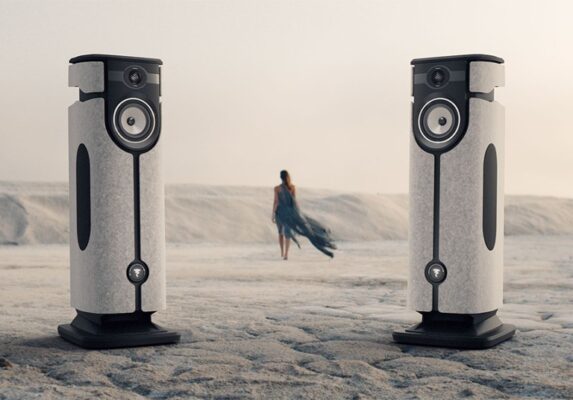
This can’t be all that sensitive a tool as, in the review setup, the paired-sounds all seemed centered and/or equal in volume—and I know my room has issues (pretty much everyone’s does, right?) that I’ve been able to ameliorate with a number of more sophisticated room-correction protocols. Réjean Bedel, Focal’s Group Marketing Manager, explained the rationale behind the feature. “It’s worth noting that the frequencies tested by ADAPT are predominantly in the lower spectrum, as this is where most significant issues tend to arise in rooms with sub-optimal acoustics. Addressing these low-frequency challenges can help mitigate common problems like standing waves or bass resonances.” If you’re going Full Lifestyle and one speaker is next to an overstuffed chair and the other inches away from a ceiling-to-floor glass window, ADAPT could be of benefit.
The first music to come out of the Divas, once the app had been installed and a connection established with my network, were several tracks off the 2019 album Friday from the Canadian jazz/rock band Monkey House. Though the placement of the speakers had been pretty casual at that point, the Divas immediately impressed with their striking dynamics and potent bass. Especially after the loudspeakers’ position in the room had been optimized, low-frequency performance emerged as a major strength. One parameter that especially got my attention was what one could call “bass heft,” perhaps best described as what you experience when you hear electric bass played through a single amplifier at a decent volume, supported by a suitably miked kick drum, at a bar, small club, or college dorm lounge. The sound is fat and concussive—it’s close to bass “slam” but not exactly that and unrelated to bass extension or power. To a great degree, it drives the music forward.
For some time, I’ve been a fan of sealed-box dynamic loudspeakers because, with most kinds of music, the bottom octaves are cleaner, more evenly produced, and more tuneful. But “heft” is something that ported designs, at their best, can do better, and the Divas do it especially well. The walking bass line from the chorus of Brian Bromberg’s instrumental track “Is That the Best You Can Do?” was simply phenomenal in this regard, taking me back to those bars and lounges when I stood a few yards from the band, feeling their presence without necessarily jeopardizing my hearing.
As above, a second area in which the Utopia Divas excelled was with musical dynamics. To some, noting that a loudspeaker has “good dynamics” is simply a way of saying that it can play loudly, but, of course, we’re not just talking Black Sabbath and Blue Man Group here—though the Focals comfortably contain the climaxes of symphonic spectaculars and big band blowouts without signs of stress—but also material that depends on dynamic contrast to make musical points. How about the opening pages of Mahler’s Third that, in the course of a minute and twenty seconds, travels from a monumental proclamation by eight unison French horns playing fortissimo to an ultra-soft passage for bass drum alone. You should be on the edge of your seat. Likewise, when playing the title track from Tricycle, the DMP album by Flim and the BBs that was the first non-classical CD ever released and an audio store staple 40 years ago, resist the temptation to turn up the gain based on the opening passage for piano alone. You could definitely regret that with a loudspeaker like the Diva. Finally, when it comes to this sonic parameter, there’s the loudspeaker’s way with what audio enthusiasts have come to refer to as microdynamics, those subtle shifts in volume and emphasis that characterize the most engaging vocal and instrumental performances. They are elegantly negotiated by the Divas, whether it’s with chamber music or a Billie Holliday ballad.
Beyond the Utopia Diva’s high marks for bass and dynamic performance, the speaker fares well with all the other audio metrics that are usually on the table. The treble is open, extended, and nicely textured; listen to the soft, high tones sustained by four first violins for the initial two minutes of Borodin’s In the Steppes of Central Asia, as recorded for Telarc by Leonard Slatkin and the St. Louis Symphony. The scaling of disparate instruments in a small ensemble—say, the violin, clarinet, bassoon, trumpet, trombone, string bass, and percussion employed for Stravinsky’s A Soldier’s Tale—is convincingly represented by the Divas with recordings valuing that parameter, such as Paavo Järvi’s version for Pentatone. Subtle differences in instrumental timbre are delineated effectively: a Stradivarius violin versus a Guarneri, trumpet versus cornet, viola down low versus cello up high. Spatiality is quite good, with a seamless soundstage and decent front-to-back layering on familiar symphonic recordings.
Some traditional audiophiles may feel a twinge of disappointment because the Divas don’t lend themselves much to tweaking. But just because it’s fairly easy to achieve good sonic results with these loudspeakers doesn’t mean they can’t sound better with more meticulous attention paid to their placement and to room treatment. And there are at least two hardware changes that could be considerations. For me, using an Ethernet cable between the primary and secondary improved the sound of most recordings, not just those with a resolution greater than 24/96. On my behalf, Réjean Bedel asked a Focal engineer if this was possible and passed along the tactful response that “human hearing can sometimes detect nuances that go beyond measurable data, so you might notice subtle differences in the character of the two connection types.” Secondly, when I replaced the stock AC power cords with a pricey Graceline model, I heard punchier dynamics and fuller bass. For the most restless of audiophile souls, there’s always the possibility of intervention.
Should we think of the Focal Diva Utopia as a “lifestyle product?” After several weeks of listening to (and looking at) them, I still wasn’t entirely sure and did what any self-respecting college student facing a deadline would have done: I asked AI. And got two different opinions.
From Google AI Overview: “Yes, the Focal Naim Diva Utopia is widely considered a ‘lifestyle product’ due to its combination of high-end audio quality, sleek design, ease of use, and focus on a premium listening experience, going beyond just pure audiophile specs and appealing to users who value aesthetics and convenience as much as sound fidelity; essentially, it’s a high-end speaker designed to seamlessly integrate in a luxurious lifestyle.”
ChatGPT disagreed: “The Focal Naim Diva Utopia is more than just a ‘lifestyle product.’ While it is designed with elegance and aesthetic appeal in mind, it is primarily a high-performance audio system created for audiophiles who value uncompromising sound quality…. So, while it has lifestyle appeal in its design, its core is rooted in delivering exceptional sound, setting it apart from typical ‘lifestyle’ audio products.”
I think I’d go with the second guy, and not just because he bought me coffee at a virtual Starbucks. Assuming that analog playback isn’t part of your audio experience, you’re getting a complete world-class two-channel audio system for $40,000, which, in today’s high-end scene, is truly a bargain. The Focal/Naim product should be a serious consideration for real-world audiophiles, even if aesthetic factors aren’t in play.
And if you need something new to sit on while enjoying your new Divas, I know a place in lower Manhattan where you can pick up a nice sofa for $30,000. That’s with the customer’s own material, excluding taxes, crating, and transportation, so probably right around the cost of the speakers. I’d pass on it, but that’s just me. It’s a lifestyle thing.
Specs & Pricing
Type: Three-way, bass reflex active, wireless
Driver complement: One 5/8″ beryllium inverted dome tweeter, one 6.5″ midrange, four 6.5″ woofers
Inputs: Optical (TosLink), RCA analog, USB, HDMI, Ethernet
Frequency response: 27Hz–40kHz (±3dB)
Low frequency cut–off: 24Hz (–6dB)
Dimensions (max): 16 ½” x 47 5/8″ x 22″
Weight: 141 lbs.
Price: $39,999/pair
FOCAL-JMLAB
108, Rue de l’Avenir
42353 La Talaudière
France
focal.com
Focal Naim America (U.S. distributor)
313 Rue Marion, Repentigny
Quebec, QC J5Z 4W8, Canada
focalnaimamerica.com
Tags: FOCAL FLOORSTANDING LOUDSPEAKERS











